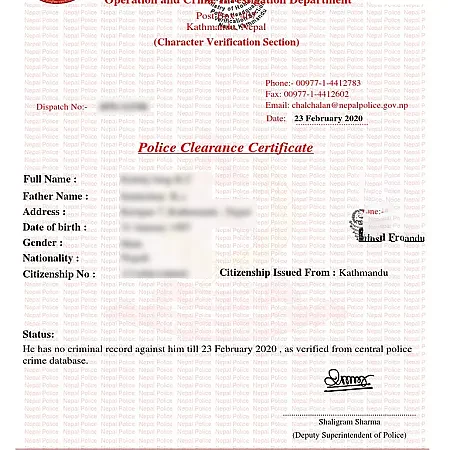Introduction
Road laws in Nepal are governed by comprehensive regulations designed to ensure traffic safety and order. These laws are enforced through the Motor Vehicle and Transport Management Act 2049 and subsequent amendments. Understanding these regulations is essential for all road users.
Traffic violations are penalized severely under Nepalese legislation. The legal framework was updated recently to address growing vehicular density and road safety concerns. Compliance with these laws is mandatory for all drivers operating within Nepal's borders.
Key Road Laws and Regulations in Nepal
Driver's License Requirements
Driving licenses are issued by the Department of Transport Management under strict guidelines. Age requirements vary based on vehicle categories. Heavy vehicle licenses require additional certifications and medical clearances.
The licensing process involves written examinations, practical driving tests, and document verification. Foreign license holders must obtain Nepalese permits for extended stays. International driving permits are recognized for short-term visits only.
Vehicle Registration and Documentation
All vehicles must be registered with transport offices within prescribed timeframes. Registration certificates must be renewed annually through designated centers. Insurance coverage is mandatory for all registered vehicles.
Ownership transfer procedures require proper documentation and fee payments. Vehicle fitness certificates are mandated for commercial and aged vehicles. Non-compliance results in registration cancellation and legal penalties.
Traffic Violation Penalties and Fines
Fine Structure Table
|
Violation Type |
Fine Amount (NPR) |
License Points |
Additional Penalty |
|
Speed Limit Violation |
1,000-5,000 |
2-4 points |
Warning/Suspension |
|
Drunk Driving |
2,000-10,000 |
6 points |
License Suspension |
|
Signal Violation |
500-1,500 |
1-2 points |
Traffic Education |
|
Helmet Violation |
500-1,000 |
1 point |
Vehicle Impound |
|
Parking Violation |
200-1,000 |
0-1 points |
Towing Charges |
|
Document Violation |
1,000-3,000 |
2 points |
Court Appearance |
Serious Traffic Offenses
Reckless driving charges are filed for dangerous vehicular operation. Hit-and-run cases result in criminal prosecution and compensation claims. Vehicular homicide carries imprisonment terms and substantial fines.
License suspension periods range from three months to permanent revocation. Repeat offenders face enhanced penalties and mandatory court appearances. Vehicle confiscation occurs for severe violations.
Speed Limits and Traffic Signals
Speed Limit Guidelines
Speed limits are established based on road categories and locations. Urban areas maintain lower limits compared to highways. School zones enforce reduced speeds during operational hours.
Highway speed limits vary between 40-80 kilometers per hour. Enforcement is conducted through speed cameras and mobile units. Exceeding limits by significant margins results in severe penalties.
Traffic Signal Compliance
Traffic signals must be obeyed at all intersections. Red light violations are monitored through automated systems. Amber signals require vehicles to stop safely when possible.
Pedestrian crossings are protected through signal timing systems. Emergency vehicle priority is mandated during signal operations. Traffic police override signals during special circumstances.
Insurance and Accident Procedures
Mandatory Insurance Requirements
Third-party liability insurance is compulsory for all vehicles. Coverage amounts are specified by insurance regulations. Policy renewals must be completed before expiration dates.
Comprehensive insurance provides additional protection options. Claims processing follows established procedural guidelines. Insurance verification is required during traffic stops.
Accident Reporting Procedures
Traffic accidents must be reported to police immediately. Fatal accidents require specialized investigation teams. Property damage cases follow simplified reporting procedures.
Medical assistance takes priority over legal formalities. Accident scenes must be preserved for investigation purposes. Insurance companies are notified within specified timeframes.
Commercial Vehicle Regulations
Licensing and Permits
Commercial driving licenses require enhanced qualifications and testing. Route permits are mandatory for specific commercial operations. Goods transportation involves additional documentation requirements.
Driver working hours are regulated to prevent fatigue-related accidents. Vehicle maintenance schedules must be maintained and documented. Loading restrictions are enforced through weight stations.
Safety Standards Table
|
Vehicle Category |
Safety Requirements |
Inspection Frequency |
Permit Validity |
|
Public Transport |
GPS tracking, First Aid |
6 months |
1 year |
|
Cargo Vehicles |
Load sensors, Reflectors |
6 months |
1 year |
|
Tourist Vehicles |
Insurance, Guide License |
3 months |
6 months |
|
School Buses |
Speed governors, Attendants |
3 months |
6 months |
Pedestrian Rights and Road Safety
Pedestrian Protection Laws
Pedestrians are granted right-of-way at designated crossings. Sidewalk usage is protected under municipal regulations. Vehicle operators must yield to pedestrians in specific situations.
School zones implement enhanced pedestrian safety measures. Construction areas require temporary pedestrian accommodation. Disabled pedestrians receive additional legal protections.
Road Safety Initiatives
Public awareness campaigns are conducted regularly by authorities. Educational programs target young drivers and students. Community involvement is encouraged through safety committees.
Road infrastructure improvements prioritize pedestrian safety features. Accident data analysis guides policy development and enforcement strategies.
Frequently Asked Questions
What documents are required for driving in Nepal? Valid driving license, vehicle registration certificate, insurance policy, and route permit (if applicable) are mandatory documents that must be carried while driving.
How are traffic fines calculated in Nepal? Traffic fines are determined based on violation severity, repeat offense history, and vehicle category. Calculation follows standardized penalty structures established by transport authorities.
Can foreign tourists drive in Nepal with international licenses? Foreign tourists can drive with valid international driving permits for up to 90 days. Extended stays require Nepalese driving license conversion procedures.
What happens if caught driving without insurance? Driving without insurance results in fines ranging from NPR 2,000-5,000, vehicle impoundment, and mandatory insurance purchase before release.
How long does license suspension last for drunk driving? Drunk driving violations result in license suspension for 3-12 months, depending on blood alcohol content levels and prior violation history.
Are traffic cameras legally enforceable in Nepal? Traffic cameras are legally recognized evidence collection systems. Citations issued through camera systems carry full legal validity and must be contested through proper channels.
What is the process for appealing traffic violations? Traffic violation appeals are filed through district transport offices within 35 days. Supporting evidence and legal representation improve appeal success rates.
How often must vehicles undergo fitness testing? Private vehicles older than 15 years require annual fitness testing. Commercial vehicles undergo fitness tests every 6 months regardless of age.
Conclusion
Road laws in Nepal are comprehensive regulations designed to ensure traffic safety and legal compliance. Understanding these laws prevents violations and promotes responsible driving practices. Regular updates to legislation require continuous awareness among all road users.
Proper documentation, insurance coverage, and traffic rule compliance are essential for legal road usage. Penalties for violations are substantial and can result in serious legal consequences. Professional legal consultation is recommended for complex traffic violation cases.
Safe driving practices benefit all road users and contribute to national traffic safety objectives. Compliance with road laws protects drivers, passengers, and pedestrians while supporting Nepal's transportation infrastructure development goals.




